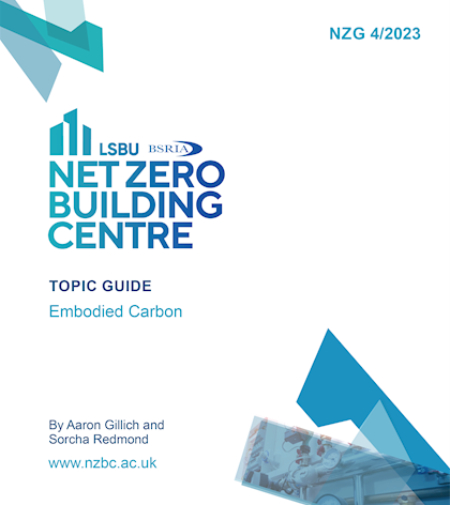BSRIA Whitepaper on Embodied Carbon
A net zero carbon building is one with net zero whole life emissions. This includes both operational and embodied emissions. Operational emissions should be near zero. Embodied emissions from the product and construction phases should be measured, minimised, and offset at practical completion. This guide focuses on what building professionals need to understand about embodied emissions as part of creating a net zero built environment.
Embodied carbon is a rapidly evolving issue and there is a growing number of resources available to demystify the topic. This guide distils and signposts to these resources, with a particular focus on building services. It focuses on what is possible with today’s technology, and which decisions have the greatest impact. It is aimed at built environment professionals, including designers, building owners and manufacturers of building products. It is the fourth in a series of guides published by the Net Zero Building Centre, following on from:
- NZG 1/2022 Net Zero Carbon Buildings
- NZG 2/2023 Indoor Environmental Quality and Net Zero
- NZG 3/2023 The Global Context for Net Zero
The Net Zero Building Centre is a joint venture between BSRIA and LSBU with the aim of accelerating decarbonisation in the built environment. It is an innovation hub and centre of excellence that builds on the shared strengths of BSRIA and LSBU in the field of low carbon buildings.
This guide is published by the Net Zero Building Centre, a joint venture between BSRIA and London South Bank University. It focuses on what building professionals need to understand about embodied emissions as part of creating a net zero built environment.
- Download a sample preview
- Format: digital (NZG4/2023). Price: £0.00. Follow this link to download full copy.
This article appears on the BSRIA knowledge bookshop as "Embodied Carbon (NZG 4/2023)" and on the BSRIA news and blog site as "New Whitepaper: Embodied Carbon (NZG 4/2023)" dated December 2023.
--BSRIA
[edit] Related articles on Designing Buildings
- An in-depth look at Environmental Product Declarations EPDs.
- BPIE report urges EU to incorporate the carbon footprint of construction into policy.
- BS EN 15978-1.
- BSRIA Whitepaper on Embodied Carbon NZG 4/2023
- Carbon dioxide.
- Carbon footprint.
- Climate change act.
- Climate change science.
- Climate Emergency Design Guide.
- Cradle to grave.
- Dr. Natasha Watson; UK lead for embodied carbon at Buro Happold.
- Embedded carbon emissions.
- Embodied carbon.
- Embodied energy.
- EN 15804+A1 2012.
- Environmental product declaration EPD.
- Greenhouse gas.
- Life Cycle Carbon Emissions.
- Mandatory and optional environmental impact categories.
- Optional environmental impact categories.
- PHribbon tool calculates embodied carbon of designs.
- Product Environmental Footprint PEF.
- Product category rules PCR.
- RICS launches new global edition of its ground-breaking Whole Life Carbon Assessment standard.
- Sustainable procurement.
- Sustainability in building design and construction.
- The sustainability of construction works.
- Upfront emissions.
- Use stage embodied carbon.
- Wood, embodied carbon and operational carbon.
- Whole life carbon.
Featured articles and news
Gregor Harvie argues that AI is state-sanctioned theft of IP.
Many resources for visitors aswell as new features for members.
Using technology to empower communities
The Community data platform; capturing the DNA of a place and fostering participation, for better design.
Heat pump and wind turbine sound calculations for PDRs
MCS publish updated sound calculation standards for permitted development installations.
Homes England creates largest housing-led site in the North
Successful, 34 hectare land acquisition with the residential allocation now completed.
Scottish apprenticeship training proposals
General support although better accountability and transparency is sought.
The history of building regulations
A story of belated action in response to crisis.
Moisture, fire safety and emerging trends in living walls
How wet is your wall?
Current policy explained and newly published consultation by the UK and Welsh Governments.
British architecture 1919–39. Book review.
Conservation of listed prefabs in Moseley.
Energy industry calls for urgent reform.
Heritage staff wellbeing at work survey.
A five minute introduction.
50th Golden anniversary ECA Edmundson apprentice award
Showcasing the very best electrotechnical and engineering services for half a century.
Welsh government consults on HRBs and reg changes
Seeking feedback on a new regulatory regime and a broad range of issues.
CIOB Client Guide (2nd edition) March 2025
Free download covering statutory dutyholder roles under the Building Safety Act and much more.

























